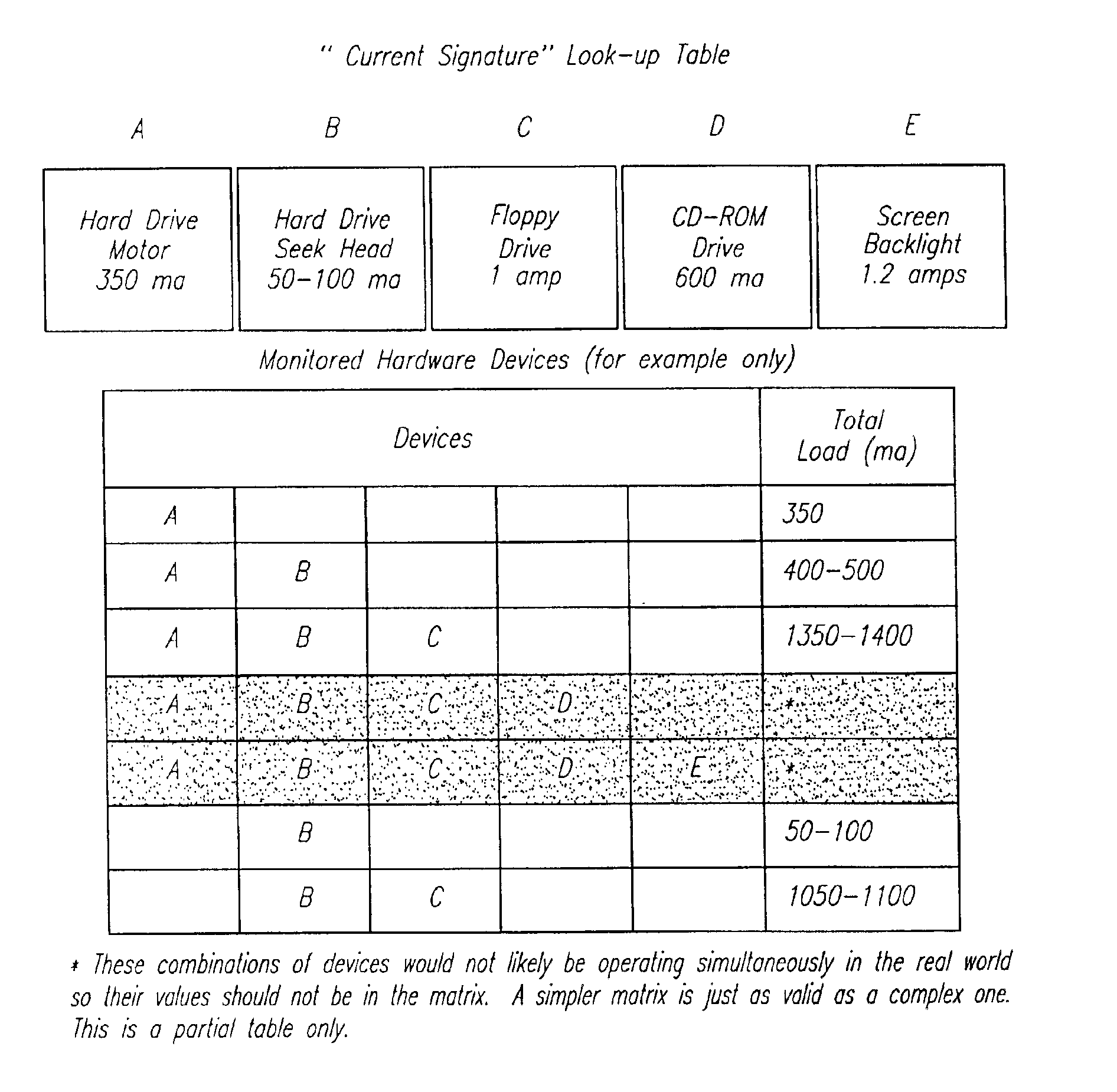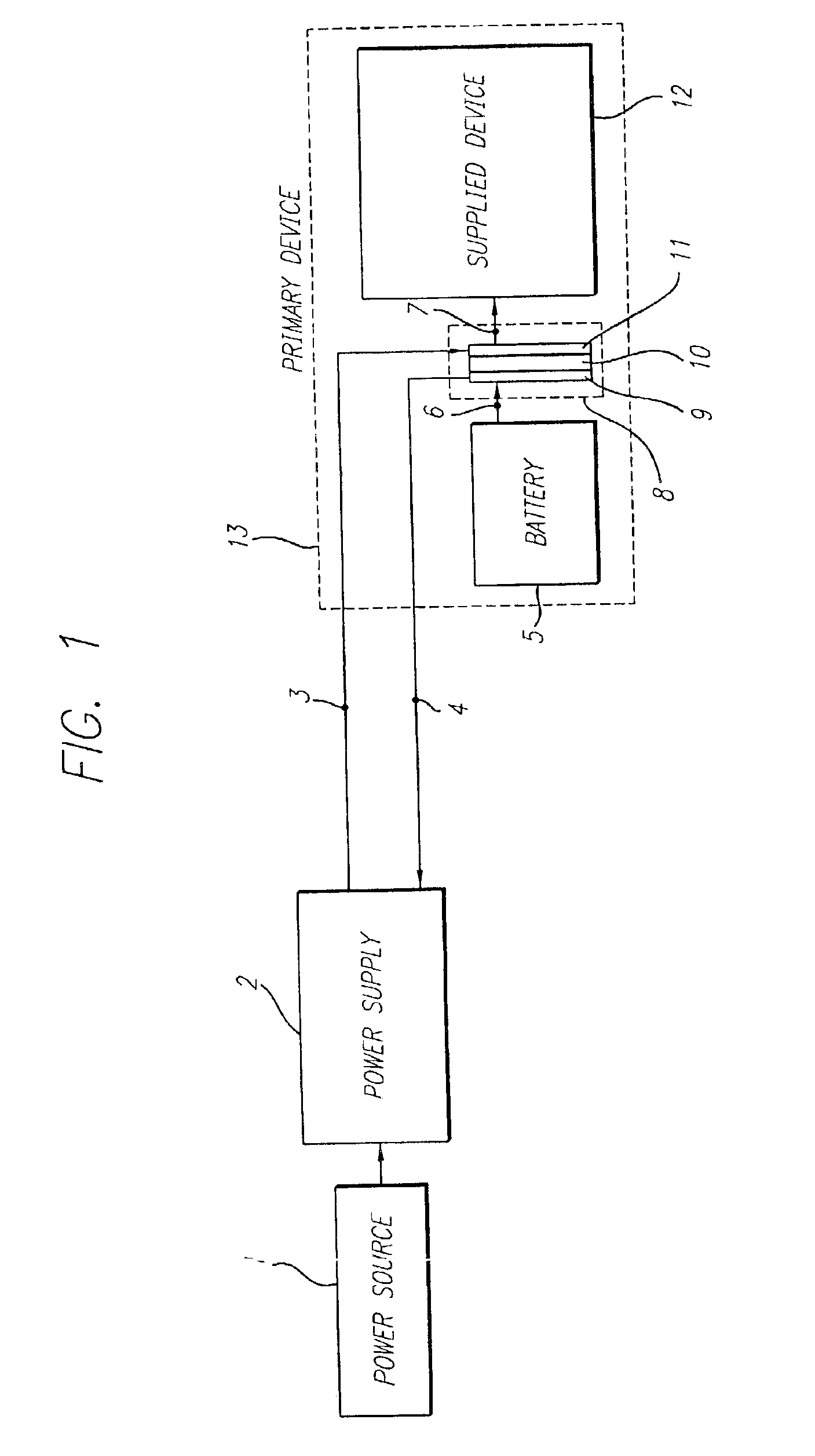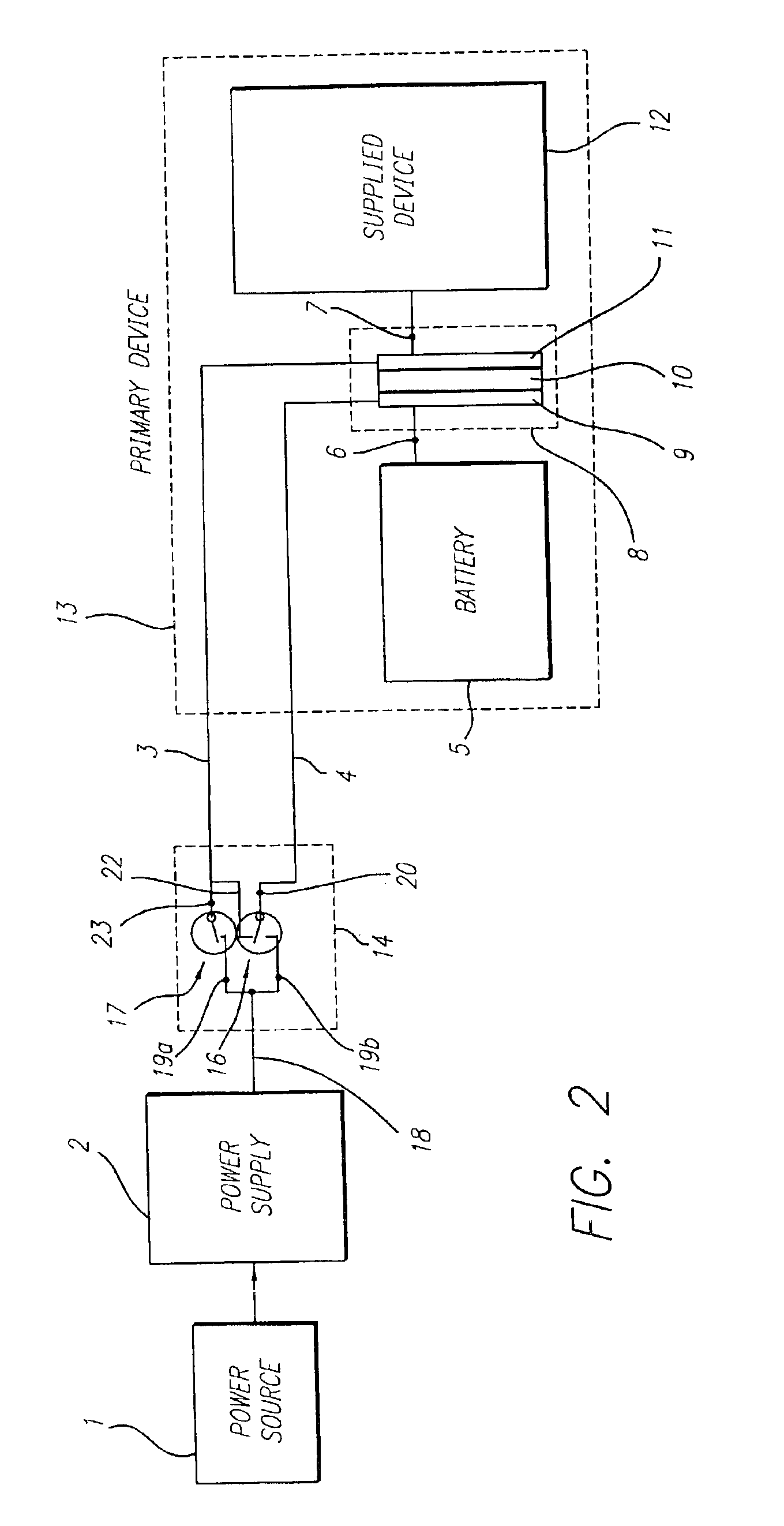Consumers have some sense of the power supply incompatibility issues, and many know that you cannot plug a 16
volt power adapter from your
laptop into a 7.2-
volt cell phone.
This dedicated power supply model creates a series of problems.
Over time, the mere process of inventorying and warehousing a large number of power adapters becomes a labor and time-intensive activity.
For a
consumer electronics manufacturer who may release a dozen or more new products each year, the problem can become significant enough that a separate division, often known as “spares” or “accessories,” becomes necessary.
The logistical problems, as well as the huge cost to be compliant, has a significant effect on manufacturers' profitability.
Consumers, being dependent on the manufacturer to sell them a replacement or second power supply, are subject to product
unavailability, power supplies which are back ordered, and the general inconvenience and loss of time to get an order processed and shipped.
This can be very frustrating to a corporate MIS (
Management Information Systems) manager, who may be responsible for several thousand laptops throughout the company.
Keeping the proper number of the correct power supply, which corresponds to its matched
laptop, requires time and effort.
Maintaining a sufficient inventory of each brand and model of power adapter leads to high costs.
Lost time, i.e., productivity, becomes an issue if the manufacturer does not have a particular power supply in stock.
While, as noted, manufacturers attempt to ensure that their device-specific power supply will only fit the equipment for which it was intended by using a slightly different connector, there are only so many connector designs available.
But these old parts never fit new notebooks because the design has changed.“This is more than an annoyance for lots of
laptop buyers.
For companies that have invested many thousands of dollars in docking stations and spare disks—or even the individual buyer who popped for a spare battery and connection to a car's electrical
system—the inability to reuse components involves real money.
The author then points out why his ideal of totally interchangeable and reusable power-related accessories may be difficult to achieve:“It can be hard for manufacturers to simplify their customers' lives.
Power supplies, because of these complex issues, particularly that of multiple SKUs, are not products which lend themselves to the normal distribution and sales channels.
Numerous SKUs lead to large inventory, warehousing and display requirements, so the power adapter is a poor candidate for ever being a locally available product sold in retail stores.
This is very unfortunate, because the power supply is definitely a “must have” accessory.
A laptop computer is quickly rendered unusable if no power supply is available.
Laptop computers do not operate with replaceable primary batteries.
Cellphone battery packs are readily available in retail stores, and via mail order, but laptop battery packs are only obtainable from the manufacturer, or from a small number of mail order companies.
Even third-party replacement
battery pack companies, such as 1-800-BATTERIES (a mail order battery provider), do not carry power supplies for laptops.
Because operating a laptop on the road elevates the need for ready access to a compatible power converter, in that the manufacturer-supplied power adapter is more subject to damage or loss while traveling, the traveler will lose valuable time and money if there is even a day or two wait to get a replacement from the original manufacturer.
Customer
confusion is still an issue, and the rigidly-defined fixed outputs may not match the customer's particular device to be powered.
These inexpensive devices are not designed for the voltages and power loads of laptops and other high-amperage computing devices.
Because these low-cost power adapters are designed for fixed-based applications, such as phones and video games, they also tend to be quite bulky and heavy, so they have limited appeal for the
consumer who wants a power supply which is small and lightweight enough to fit into a briefcase for travel.
While offering flexibility, these devices are far short of any true universally-
voltage-compatible power supply.
Furthermore, the entire
assembly, with its cigarette lighter adapters (male and female) and two modules, coiled cord, etc., makes for a bulky and cumbersome power source, not well suited to traveling.
For a
mobile computing traveler, or the worker who prefers to use a laptop in the office or home, the same issues of having to locate and purchase some proprietary hardware perpetuates the various problems described above.
For an MIS manager, acquiring and inventorying device-specific and virtually identical-looking “SmartCords” can be frustrating, since some sort of non-removable color coded labels might have to be applied to each “SmartCord” and its matching laptop.
These Nesco “SmartCords” are only 18″ long, and can readily be lost or misplaced, especially while packing or unpacking for a business trip.
Half the little dongly things I've got, I don't even know what gizmo they're for.
More importantly, half the gizmos I've got, I don't know where their little dongly thing is.
Thus, connector
confusion and incompatible plugs already are perpetuating more SKUs and user
confusion.
Because of the sheer number of adapter types that would have to be stored to satisfy the needs of passengers carrying laptops, airlines probably will not furnish the devices for use or rental.
Delta Airlines has already felt the
impact of this passenger confusion, when it paid for a replacement laptop when a passenger used the wrong adapter.
The downside to passengers is that “ .
While
Delta Airlines, according to a report in Business Traveler News (May 5, 1997), was prepared to make the 10 most commonly used power adapters available to passengers for free, the airline has since decided to not provide any power devices, and instead require the passengers to purchase their own units from vendors like Xtend Micro Products.
Purchasing and transporting all the necessary power modules can be expensive, bulky, heavy and inconvenient.
Outside these particular classes of users, no one uses a computing device routinely in a car, so the double benefits which may seem to be apparent here are not well met in the real world of
mobile computing, especially if you consider the obverse, where the group of users benefiting from car-enabled laptop power may not fly on an
airplane very much, if at all.
The EmPower
system, perhaps in reaching for the “it works on airplanes and in cars” dual functionality for the company's third-party power adapters, has designed an inherently electrically-inefficient
system.
Boosting
voltage leads to power conversion inefficiencies, which results in heat.
Because aircraft cabins are sealed air circulation systems, the heat from multiple power sources is undesirable.
Anecdotal information indicates that the EmPower ISPS (In-Seat Power Supply) is inefficient, with perhaps 20+% of the power transfer dissipated as heat.
Thus, EmPower's current model of an embedded in-flight power conversion system has deficiencies in
energy conservation because of the loss in performance by boosting from a lower input
voltage imposing a noticeable
thermal load on the aircraft's air
control system.
These thermal issues also relate to the source of the power, which is an engine-driven generator on the aircraft.
This inefficiency also directly impacts the amount of expensive 100-
octane aviation fuel which must be burned, i.e., the airlines have to burn carbon-based fuels to provide laptop power.
These cords are not universally available, although a well-stocked
electronics store, such as Radio Shack, will likely have the required cord.
While in-office or in-home usage brings convenience to consumers who own these products, these manufacturers' laptops suffer when they need to be transported .
A
power inverter is required to convert the DC power to AC, and inverters are actually larger and heavier than the original AC / DC adapter, so the trade-off in customer convenience doesn't favor the internal power supply concept.
On commercial aircraft, an
inverter is even less desirable.
Furthermore, an
inverter is potentially dangerous aboard an aircraft, in that the “live” end of an
inverter not connected to its host device, but still plugged into the power input port, has hot 110 VAC exposed to an environment where a spilled drink can create a serious short, and possible fire.
Other problems inherent in this approach are that the weight of the internal power supply is always transported, even for short-duration local trips where the internal battery would provide adequate power.
Heat from the internal power adapter also shortens the mean time between failure of nearby components within the laptop (especially if the user ignores the warning, and leaves the laptop closed every time the batteries are recharged).
As with any integration / packaging solution, the failure of even a minor component in a bundled, self-contained product requires that the entire device be sent in for service.
Furthermore, the
consumer cannot order a spare power supply, and achieve the
resultant fault-tolerant solution that redundant systems would allow.
Since the power supply is both the most vulnerable component in a failure-analysis model (primarily because of heat and the quality of components used in an accessory item that normally is priced to the OEM customer at less than $10.00), plus the fact that the power converter is the most essential item to the operation of the host device, an embedded power supply is not the best expression of properly implemented power technology.
Assuming that even a well-designed power adapter could be cost-effectively built to have only 50% of that sixty-per-week
failure rate of the external units, there would still be over 1,500 failures per year with the internal-power-supply-equipped equipment.
Without a power supply, the device will work on battery power for a
finite time, after which it is rendered totally useless.
If the device is a mobile computer, the loss of access to data can have significant deleterious effects.
 Login to View More
Login to View More  Login to View More
Login to View More 


